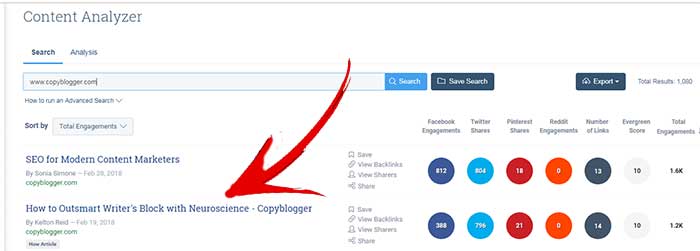Writer’s block is a serious problem with many writers.
Here’s the usual scenario…
You’ve had it in your brain all day that you need to write. Finally, you set your buttocks down at your laptop and stare at the screen.
Now it’s time to do something.
Ugh…
Nothing is coming. So you start snooping around on the Internet in a vain attempt to find ideas that will give you inspiration. Oh, while you’re at it, you need to check on your email and glance at Facebook; you really don’t want to miss out on anything important – and it’ll only take a few minutes.
2 hours later, you still haven’t written anything and you’re frustrated. Not only that, but you have other pressing matters of the day that you can’t ignore.
You’ve got a lot of movement but no effect…Yeah, writer’s block is setting in.
Suddenly you realize that you’ve missed another opportunity and a sick, depressing feeling comes over you like a soggy blanket.
Does this sound familiar? You want to write, but for some reason, you just can’t get it done.
In this post, I’m going to show you how you can jump start your writing every day, whether you’re a copywriter, blogger, or any other type of writer. I’m going to hand you proven, simple, and detailed action steps that will make sure you’re writing every single day. This will enable you to easily start a writing business.
Ready? Let’s roll…
How Dan Lok Gets Things Done
I got this idea from a great copywriter and entrepreneur named Dan Lok, who said he got the idea from Bruce Lee. ( Even though I’m not a martial artist, I’m still a huge Bruce Lee fan. So when Dan Lok started talking about Bruce Lee, I really paid attention.)
The idea stems from Bruce Lee’s own style of fighting, which he named Jeet Kune Do. In Cantonese, it means, “The way of the intercepting fist”. People that study this method of fighting have the philosophy of “minimal movement with maximum effect”.
MINIMAL MOVEMENT – MAXIMUM EFFECT IS WHAT YOU WANT TO DO
WHEN YOU’RE SITTING DOWN TO WRITE!
When a guy like Dan Lok comes along and applies this philosophy to his business, he’s not wasting a lot of time doing busy work. He knows what he’s going to do ahead of time and then executes it very quickly – thus getting the maximum value from it.
So what I did was I adapted this ideology to my own writing tasks, and I’m going to share that with you now.
You want to do this when you sit down to write. However, there are five separate components to it.
[One last thing about Dan Lok…Get on his mailing list and make a file of all the emails he sends you. I have a massive swipe file of his excellent, straight to the point email messages. You can also learn more about him here: Dan on Demand]
The 5 Action Components That Will Outsmart Writer’s Block and Supercharge Your Work Habits
Action Components:
- Preparation
- Execution
- Review
- Fine Tune
- Publish and Promote
You’ll notice I said “separate components” above. That’s because they are different tasks that are to be done at different times. I’ve made these components easy for you to follow by giving you step-by-step instructions.
Let’s go through them, shall we?
Preparation – Your First Step to Outsmarting Writer’s Block
Component 1 is getting ready to write. You need to do research, gather ideas and collect swipe files of what you’re going to write about.
This is NOT to be done during your writing time. Your writing time is sacred!
Here’s how I do Action Component 1 – Preparation for Writing:
Usually, I do this part while my wife practices flute right behind me; it doesn’t require isolation or working in total silence.
You need to take it seriously and focus on what you’re doing. So you should shut down email, Facebook, YouTube, and other distractions that will eat up your time.
Action Component 1: Kick Starting Your Writing
Step 1:
Go to Buzzsumo or other post ranking sites and see what topics are popular in your niche. (The free version of Buzzsumo only gives you 3 opportunities to use their search function. So, if you’re using this site, you’ll want to make your searches count.)
There are two way to use Buzzsumo. The first way is to type in a subject. The second way is to type in the URL or web address of a site that is very popular in your niche.
In my case, I usually type in the URL to see what the big dogs are doing in my niche.

The site I plugged into Buzzsumo, which was Copyblogger, had a very successful post called “The 5 Most Vital Things Only Serious Writers Do”, by Kelton Reid.

It was their second most successful post and it was shared thousands of times. Armed with this information, I’m now ready to move on to the next step.
Step 2:
Create a file of swipes or successful posts on this subject.
This is pretty easy to do. If you type in the title of the post you’re looking up into Google, you’ll get loads of related posts – some of them will have very similar titles.
Since Google has rated them very highly, you can almost bet that they’ve been shared and linked to. This means that there’s quality material in these posts that you can get ideas from.
WARNING WILL ROBINSON…DANGER! DANGER!
Step 3:
Now you will need to copy and paste the articles you’ve found into a word processor, or you can just print them up. If you copy and paste them into a processor like Microsoft Word, you can use the highlighter to emphasize the parts you really like.
I usually print the articles I like and sit down with a cup of coffee and read them while I’m talking to my wife. I’ll take a highlighter pen and mark the parts I think are the most important while I’m reading them.
Once I’ve finished that, if I feel that I’ve got enough material under my belt I’ll move on to the next component…
Steps to Action Component 2: Getting the Business of Writing Done…Fast!
Action Component 2 is very simple. You’ve read and digested a load of articles and now it’s time to start writing. This is the part where you sit down and begin.
Step 1:
You can take the swipe files you made and read over the highlighted parts that you read the day before. Then try to organize them as you go so you can refer to them as needed.
You will also need to make sure any other references you need are ready and available. Books, printed swipe files, and files you need to use from your computer should be accessible in seconds.
You really don’t want to stop so you can start digging and looking around for resource material while you’re trying to write.
Step 2:
At this point, you can just start writing about the subject that you researched; the good, the bad or the ugly…It doesn’t really matter. The idea is to just get something down about your subject.
Remember the Jeet Kune Do idea: Minimal Movement – Maximum Effect. You don’t want to do all kinds of activity while you’re writing because you could get distracted and lose time.
Notice: If you get stuck and find that you still can’t write, here’s an easy way to “prime the pump” and get something down.
Open up a piece of writing by someone you admire and rewrite it in your word processor. This will get you thinking and writing at the same time. While you’re copying a paragraph or two, you’ll start generating ideas. This will make it very easy to get started.
Step 3: Get your writing done. I usually aim for at least a 1000 well written words a day. Stephen King once commented that 1500 very well written words was a good goal.
However, if you are writing non-fiction stuff like I do, it is easier. Writing stuff like Stephen King or Arthur C. Clarke is very difficult unless you’re great at story telling.
So it shouldn’t be too hard to get in 1,000 to 1500 words a day. Once you have a set goal in mind and have accomplished it, pat yourself on the back.
Hey, You Made it! You Can Become Somebody!
As you can see, there is nothing complicated about sitting down to write. Does that mean you’re finished?
Nope. You still have other components to complete.

Steps to Action Component 3: Reviewing and Editing Your Writing
Now you are going to review and read everything you’ve written. This is a very important component for a number of reasons:
- If you’re going to be writing professionally you’ll want to be seen as a pro. So you should try to make your writing as good as it can possibly be.
- When you write on the Internet you have an opportunity to be seen by millions of people. You sure as heck don’t want to be seen as a sloppy writer.
- If your writing is first class, you’ll be seen as an authority. If you write piles of poorly written crap, you won’t be taken seriously.
Step 1:
Once you feel you’re finished with your copy or post, you can review and edit it. You have to follow these steps, because it is extremely important.
While editing, you want to make sure that you take out words you don’t need. Most people read at about a 7th grade level, so you want to make your writing as simple as possible.
Example of Editing:
I really appreciate your taking the time out of your busy schedule to read my detailed post.
Should become:
I appreciate your taking the time to read my post.
Or even:
I appreciate your reading my post.
Step 2:
Once you’ve doubled back through your material, you need to print it up. Yes, hit the print button on your word processor and get a hard copy of your post.
You will now need a straight edge or ruler. Take your ruler and read your material line by line using it to guide you down the page. You should also read aloud as you do it.
This will help you identify any awkward sounding sentences and help you find areas where you may have interrupted the flow of your piece.
Sometimes while you are reading you’ll notice that you may have jumped to an unrelated subject. Reading and checking your work aloud will help you see places where you can lead to the next idea smoothly.
(It’s always good to give your readers a tease as to what’s coming in the following sections.)
Step 4:
Once you’ve finished marking your hard copy of the things you need to change, go back to your word processor and fix your copy.
I usually read aloud off the screen what I’ve revised. However if you want to print up what you’ve corrected, go ahead.
Action Component 4: Fine Tuning Your Writing for Maximum Results
Step 1:
After you’ve finished writing, you can now add or revise the subheads. If you haven’t written a title or headline for your piece, you can do so now. Now you can insert links. You should keep in mind to link internally as well as having links pointing to other relevant sites.
Step 2:
Also, you can add pictures to your site. If you don’t know where to get royalty free pictures, I have an excellent guide to finding them here: Creating The Best Images
Step 3:
If I’m writing for the web, I use the Yoast application to check for Search Engine Optimization (SEO) stuff. Yoast will tell you when you’ve made errors like repeating the same phrase over and over or if you don’t have enough subheads.

Action Component 5: Publish and Promote Like a Boss!
Now that you’ve gone through this entire process, it’s time to get it onto the web. Before I hit the publish button, I use Word Press’s “preview” button so I can see what the post looks like. If I’m just writing a stand-alone article or I’m writing a physical piece, I’ll scan it one last time.
You can also get someone to read it for you as well.
Step 1:
It is now time to hit the publish button and send your masterpiece into the world! (Gee, that step is short and sweet!) If you’re writing for a magazine or copy for a client, you can now print it up.
Step 2:
You can now promote your writing across the web. There are several ways to do this. One of the recommended ways is to reach out to some influencer that you’ve mentioned in your writing and let them know you wrote about them.
They probably won’t respond to you right away, so you’ll have to keep sending polite messages to them. If you’re worried about doing this, just remember the worst thing they can do is send you an email telling you to get lost.
The focus of this post was to get you writing every chance you get so that you’re writing every chance you get. So if you want to read an excellent post on promoting your writing go here: How to Promote Your Writing by Aaron Lee
Conclusion
While I could whip out a quick review of my writer’s block post, I’d like to leave you with some good advice. (I guess you could look at this as bonus material.)
If you are going to become a copywriter, or blogger or just a writer in general ― you’ve got to do it every day.
Yep, that’s right, every single day, come rain or shine, holiday or special occasion…you will write. The only exception will be on a day you’re placed into a coffin.
That’s how committed you have to be.
If you’re a serious writer, you’ll have lots of projects on your desk.
Currently, I have:
- A guest post I’m working on
- A book proposal that I’m finishing up
- Detailed chapter outlines of a book I’m writing
- Pitches to prospective clients
- Sales copy for a product that I’ve finished
- A post card campaign for a client
Actually, I have more than this…but you get the drift.
Before I sign off, I have one last thing I want you to do. Right now make a list of all the things you want to accomplish with your writing.
Here are a few ideas to help you:
- eBooks
- Offline and online courses
- A list of posts relevant to your niche
- Articles for social media sites
- Pitches for clients
- Guest posts
- Advertising copy for an info product you’re building
- Scripts for videos
- An actual published book
- Copy for a client
- Rewriting bad copy you get in the mail or find online
- An email campaign
This list could be rather long, because each idea has multiple ideas behind it.
Your list needs to be written now; there’s no better time than the present.
I hope that this post has helped you out in some way. If you leave a comment below, it would mean the world to me.
Sharing it on social media, it would mean the solar system…
But if you do both it will mean the galaxy!!!!
(Sheesh…I get carried away.)
